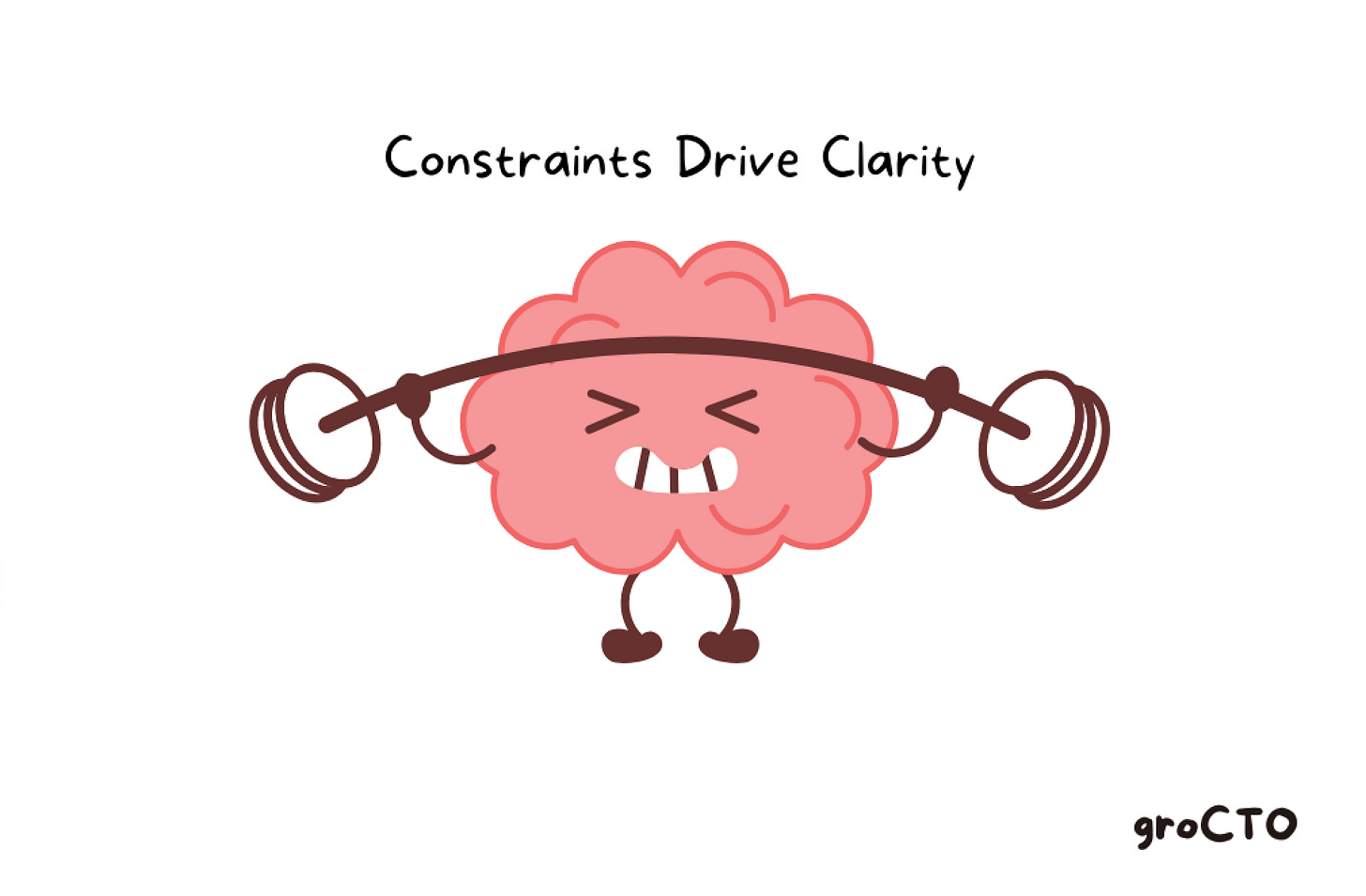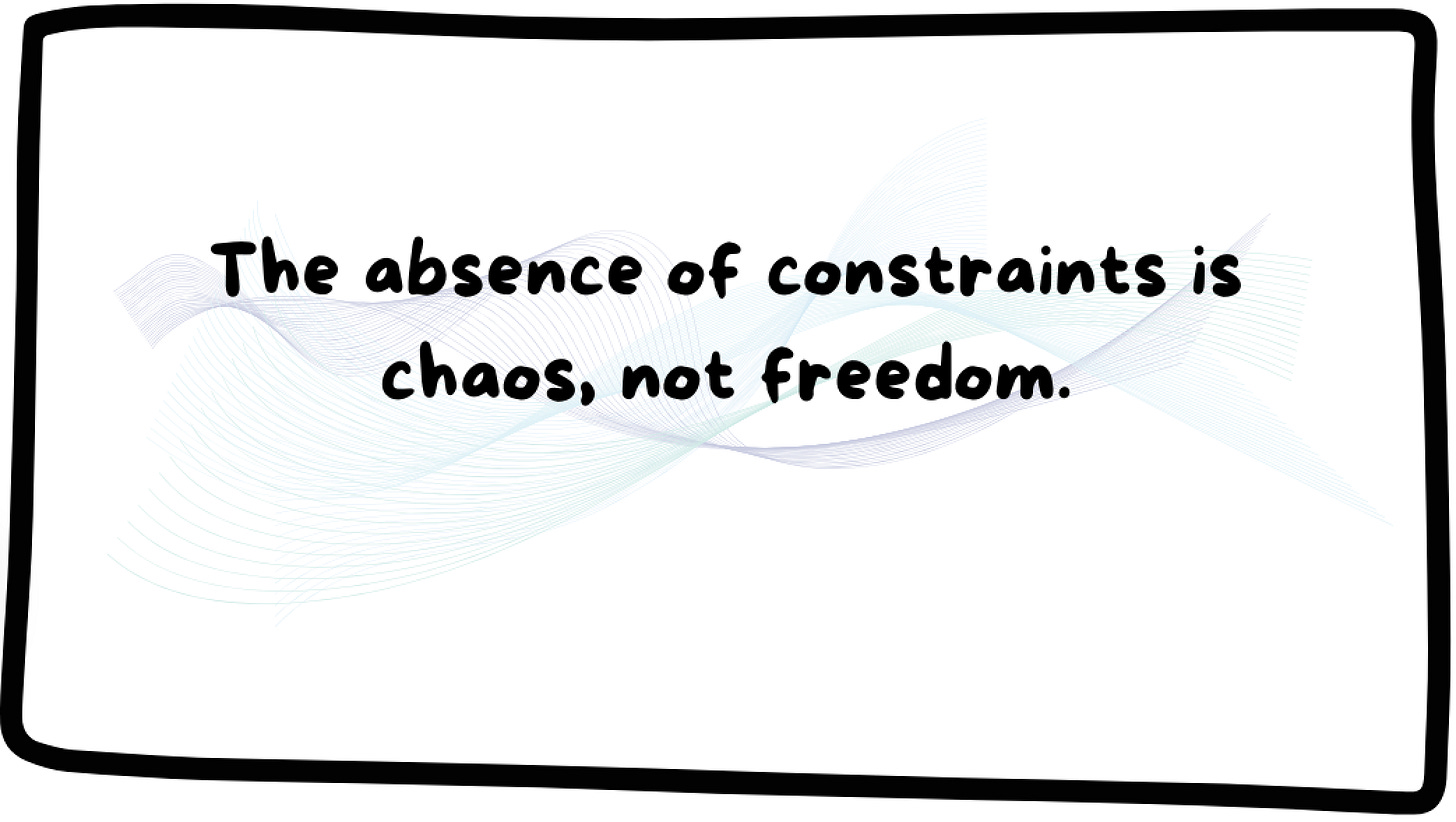Pitch Constraints like a Pro, Break away roles from titles, Big 3 AI's for Deep Research?
Issue #65 Bytes
🌱 Dive into Learning-Rich Sundays with groCTO ⤵️
Cutting through the team productivity fog
Busy calendars, endless stand-ups and overflowing dashboards don’t always mean progress. For engineering leaders, the real challenge is cutting through activity to see what actually drives outcomes.
This ebook breaks down the most common traps teams fall into, shows which signals truly reflect productivity, and gives you practical steps to turn insights into action. It’s built for leaders who want clarity, not vanity metrics and for teams that want their work to translate into impact.
Article of the Week ⭐
“I tend to advocate for WIP limits. Managers (and leaders) challenge me by asking, ‘What if we could do more stuff while blocked?’ or ‘How about when people want to multitask?’ To them, the constraint seems forced and arbitrary.“
How To Effectively Pitch Constraints
Constraints should be a gift: less chaos, more finished work, faster flow. Yet every time you propose WIP limits, zero-bug policies, or a single roadmap, people push back.
John Cutler in his latest bit is helping us explore ‘why’?
John admits he’s wired to love constraints. WIP limits, planning limits, crisp ICPs, force-ranked priorities, “start together” rituals. In his eyes, constraints are catalysts with which to cut noise, sharpen focus, and enable flow.
But not everyone sees them that way. It’s rarely about the math or the logic and often requires an additional lens of psychology and expectations:
Loss aversion. Saying “no” feels like closing doors forever, so leaders keep options open even if it wastes resources.
Optimism bias. Teams believe they’re exceptional enough to squeeze more in, “this time will be different.”
Autonomy threat. Constraints look like bureaucracy, threatening competence or judgment.
Style mismatch. Some leaders want concrete details and proofs; others prefer abstract principles. Constraints can feel arbitrary to both.
Experience. Veterans may see the value because they’ve lived the chaos or reject it as training wheels they don’t need.
The same constraint can look like elegant design to one person and red tape to another. So how do you pitch them? Cutler’s advice: stop relying on queueing theory and “math on your side.” Frame the constraint in the language that resonates with your audience:
Concrete thinkers → show case studies, observable proof, specifics.
Abstract thinkers → present it as a heuristic or principle worth trying.
Autonomy-driven leaders → involve them in setting the limit, or give it an expiration date.
Veterans → invite them to model the discipline for others, turning the rule into a mentoring moment.
Maximizers (“why not both?”) → don’t call it a constraint; call it the optimal path. Show empirically how carrying “both” slows everything down.
Constraints work best when they’re seen as enablers. Frame them as efficiency experiments or optimal paths to maximize value and leaders will (over time) stop resisting and start owning them.
Sell constraints as levers.
Other highlights 👇
Breaking a role to multiple titles
Alex Ewerlöf has seen the same anti-pattern repeat across big organizations: instead of empowering one person to own a broad role, companies split responsibilities into a collection of narrow titles. It looks neat on the org chart but creates headaches everywhere else.
The downsides of narrow responsibilities:
Endless handovers → more delays, miscommunication, and blame games
Accountability spread too thin → no one fully owns outcomes
Incentives reward silos → people protect turf instead of solving problems
Manufactured work → busywork to justify a narrow job scope
He argues the fix is simple but radical: focus on roles, not titles. Roles mean:
Generalists who can see end-to-end outcomes
Broader mandates that reduce gatekeeping
Clearer ownership “you build it, you own it”
Specialists still have their place, but they should be the exception. Fast-moving teams optimize for fewer handoffs, stronger ownership, and outcome-driven roles. If your teams feel bogged down by meetings, dependencies, or finger-pointing, check if you’ve sliced one role into too many titles.
Deep Research - Comparison of the "big 3 AI’s" and a clear winner
Tobias put the biggest three Deep Research modes head-to-head: Claude Sonnet 4.1, OpenAI GPT-5, Gemini 2.5, across three AR topics and had each model also grade all three reports.
Winner (for software/architecture): Claude Sonnet 4.1. Clean sweep across all three tests. Even the models agree on the winner, despite competing.
Deep Research is becoming the new default workflow (100s–1000s of sources → 10–20 page brief in minutes). Choice of model changes the shape of the output, strategy vs. speed vs. rationale.
How they differ (personas):
Claude. The Professional Architect 🚀
Production-minded, up-to-date, calls out gotchas (e.g., outdated SDKs) and offers alternatives, fallbacks, perf guidance, and deployment notes. Best for tech leads who want a future-proof plan, not just a prototype.Gemini. The Pragmatic Implementer 📝
Scope-tight, step-by-step, “just ship a prototype” energy. Great when you need a working demo fast and can refactor later.OpenAI. The Contextualizing Analyst 🧐
Solid “how” plus the “why.” Compares options, flags dependencies (e.g., VPS availability), and helps you justify decisions to stakeholders.
Method recap: 3 topics → each model produced a research PDF → each model then evaluated all three outputs. Tobias and all three models independently ranked Claude Sonnet 4.1 > Gemini 2.5 > GPT-5 for these tasks.
Practical picks:
Shipping real product / architecture roadmap: Claude Sonnet 4.1 (or Opus).
Fast prototype / hands-on steps: Gemini 2.5.
Decision memos / stakeholder context: OpenAI GPT-5.
Broad or high-stakes research: Run all three in parallel and synthesize.
Editorial Note: Rankings are domain-dependent; this test skewed to software dev & AR.
Find Yourself 🌻
That’s it for Today!
Whether you’re innovating on new projects, staying ahead of tech trends, or taking a strategic pause to recharge, may your day be as impactful and inspiring as your leadership.
See you next week(end), Ciao 👋
Credits 🙏
Curators - Diligently curated by our community members Denis & Kovid
Featured Authors -
, ,Sponsors - This newsletter is sponsored by Typo AI - Engineering Intelligence Platform for the AI Era.
1) Subscribe — If you aren’t already, consider becoming a groCTO subscriber.
2) Share — Spread the word amongst fellow Engineering Leaders and CTOs! Your referral empowers & builds our groCTO community.




